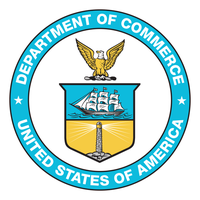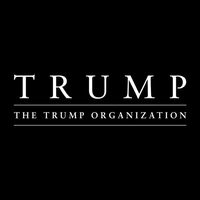The Economic Landscape: Growth, Tariffs, and a New Trade Agenda
November 28, 2024, 10:11 am

Location: United States, District of Columbia, Washington
Employees: 10001+
Founded date: 1903
Total raised: $4M
The U.S. economy is a complex tapestry, woven with threads of consumer spending, business investment, and international trade. Recent reports paint a picture of steady growth, but looming tariffs and a new trade agenda threaten to alter this landscape dramatically.
In the third quarter of 2024, the U.S. economy grew at a 2.8% annual pace. This growth is largely fueled by consumer spending, which constitutes about 70% of economic activity. The latest figures reveal that consumer spending accelerated to a robust 3.5%, the fastest growth since late 2023. Exports also played a role, rising at a 7.5% rate—the most significant increase in two years. However, this growth is not without its shadows. Business investment has slowed, particularly in housing and nonresidential buildings. While spending on equipment surged, the overall investment landscape appears less vibrant.
As President-elect Donald Trump prepares to take office, he will inherit an economy that, on the surface, seems healthy. Unemployment sits at a low 4.1%, and inflation, which once soared to a four-decade high of 9.1% in mid-2022, has eased to 2.6%. This is still above the Federal Reserve's target of 2%, but the central bank has responded by cutting interest rates. Wall Street anticipates further cuts in December, signaling a cautious optimism.
Yet, the public remains wary. Prices are still about 20% higher than they were in early 2021, and the sting of inflation lingers. The Federal Reserve's preferred inflation gauge, the personal consumption expenditures index (PCE), showed a promising decline, rising at just 1.5% last quarter. Core PCE inflation, which excludes volatile food and energy prices, also fell to 2.1%. These figures offer a glimmer of hope, but the reality is more complex.
Trump's economic agenda promises a shakeup. He has vowed to impose new import taxes on goods from China, Mexico, and Canada. Economists warn that such tariffs could be inflationary, as U.S. importers may pass on the costs to consumers. The potential for retaliation from trade partners looms large, creating a ripple effect that could disrupt the delicate balance of trade.
In a bold move, Trump has appointed Jamieson Greer as the new U.S. trade representative. Greer, a seasoned trade lawyer, is tasked with executing a sweeping tariff agenda aimed at reducing the trade deficit and protecting American manufacturing. His views align closely with Trump's hardline stance on China, advocating for increased tariffs and stronger export controls to safeguard U.S. technologies.
The proposed tariffs are staggering. Trump has threatened to impose a 25% duty on imports from Mexico and Canada and a 10% tariff on Chinese goods unless those countries take action against illegal immigration and the opioid crisis. Additionally, he has hinted at tariffs as high as 60% on Chinese imports. Such measures could reshape global trade dynamics, but they also risk escalating tensions with trading partners.
Greer's appointment signals a shift in trade policy. He has previously argued for stronger actions against China, citing concerns over its state-driven efforts to dominate global industries. His focus on diversifying supply chains away from China reflects a growing trend among U.S. businesses seeking to mitigate risks associated with reliance on a single country.
The economic landscape is shifting. While consumer spending and exports provide a foundation for growth, the specter of tariffs and trade wars casts a long shadow. The interplay between domestic economic health and international trade policies will be crucial in the coming months.
As Trump prepares to implement his agenda, the effects on the economy remain uncertain. Will the tariffs protect American jobs, or will they lead to higher prices for consumers? The answers lie in the delicate balance of trade relationships and the resilience of the U.S. economy.
In conclusion, the U.S. economy stands at a crossroads. Growth is steady, but the path ahead is fraught with challenges. The new administration's approach to trade could redefine the economic landscape, impacting everything from consumer prices to international relations. As the world watches, the U.S. must navigate these turbulent waters with caution and foresight. The stakes are high, and the outcomes will shape the future of American economic policy for years to come.
In the third quarter of 2024, the U.S. economy grew at a 2.8% annual pace. This growth is largely fueled by consumer spending, which constitutes about 70% of economic activity. The latest figures reveal that consumer spending accelerated to a robust 3.5%, the fastest growth since late 2023. Exports also played a role, rising at a 7.5% rate—the most significant increase in two years. However, this growth is not without its shadows. Business investment has slowed, particularly in housing and nonresidential buildings. While spending on equipment surged, the overall investment landscape appears less vibrant.
As President-elect Donald Trump prepares to take office, he will inherit an economy that, on the surface, seems healthy. Unemployment sits at a low 4.1%, and inflation, which once soared to a four-decade high of 9.1% in mid-2022, has eased to 2.6%. This is still above the Federal Reserve's target of 2%, but the central bank has responded by cutting interest rates. Wall Street anticipates further cuts in December, signaling a cautious optimism.
Yet, the public remains wary. Prices are still about 20% higher than they were in early 2021, and the sting of inflation lingers. The Federal Reserve's preferred inflation gauge, the personal consumption expenditures index (PCE), showed a promising decline, rising at just 1.5% last quarter. Core PCE inflation, which excludes volatile food and energy prices, also fell to 2.1%. These figures offer a glimmer of hope, but the reality is more complex.
Trump's economic agenda promises a shakeup. He has vowed to impose new import taxes on goods from China, Mexico, and Canada. Economists warn that such tariffs could be inflationary, as U.S. importers may pass on the costs to consumers. The potential for retaliation from trade partners looms large, creating a ripple effect that could disrupt the delicate balance of trade.
In a bold move, Trump has appointed Jamieson Greer as the new U.S. trade representative. Greer, a seasoned trade lawyer, is tasked with executing a sweeping tariff agenda aimed at reducing the trade deficit and protecting American manufacturing. His views align closely with Trump's hardline stance on China, advocating for increased tariffs and stronger export controls to safeguard U.S. technologies.
The proposed tariffs are staggering. Trump has threatened to impose a 25% duty on imports from Mexico and Canada and a 10% tariff on Chinese goods unless those countries take action against illegal immigration and the opioid crisis. Additionally, he has hinted at tariffs as high as 60% on Chinese imports. Such measures could reshape global trade dynamics, but they also risk escalating tensions with trading partners.
Greer's appointment signals a shift in trade policy. He has previously argued for stronger actions against China, citing concerns over its state-driven efforts to dominate global industries. His focus on diversifying supply chains away from China reflects a growing trend among U.S. businesses seeking to mitigate risks associated with reliance on a single country.
The economic landscape is shifting. While consumer spending and exports provide a foundation for growth, the specter of tariffs and trade wars casts a long shadow. The interplay between domestic economic health and international trade policies will be crucial in the coming months.
As Trump prepares to implement his agenda, the effects on the economy remain uncertain. Will the tariffs protect American jobs, or will they lead to higher prices for consumers? The answers lie in the delicate balance of trade relationships and the resilience of the U.S. economy.
In conclusion, the U.S. economy stands at a crossroads. Growth is steady, but the path ahead is fraught with challenges. The new administration's approach to trade could redefine the economic landscape, impacting everything from consumer prices to international relations. As the world watches, the U.S. must navigate these turbulent waters with caution and foresight. The stakes are high, and the outcomes will shape the future of American economic policy for years to come.
